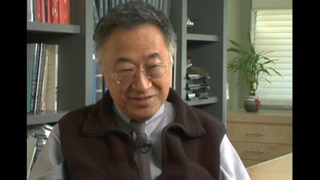Interviews
Differences between Parents
Oh, my mother did these uh, what, I, there’s a word for it, but I don’t know what it is the little birds, these wooden birds that you would paint. Uh, we have one somewhere, but it’s a really beautiful job she did.
And she’s the art half of this, you know, and my father was old school, old school Japanese, so he wanted us to be doctors or something you know, the aspirations. Art just didn’t enter his, his thinking. He never, he wanted us to be conventional and, I could never be that, you know.
But my mother was the soft one. And she was the art one, she would do us in camp, she liked to do the bonsai and the, whatever it was there. She did, did the arts, you know? He worked, he worked in the canteen, the store that was there, and his life has always been that, his business kind of mind, I don’t, I didn’t get that gene, obviously, you know.
Date: September 8, 2011
Location: California, US
Interviewer: John Esaki, Kris Kuramitsu
Contributed by: Watase Media Arts Center, Japanese American National Museum









